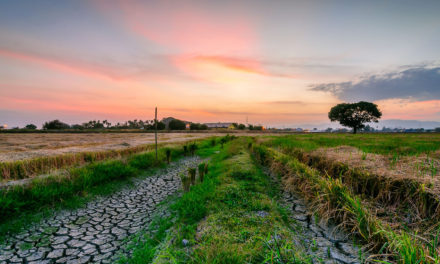If you aim to keep your lawn and landscaping alive in the high desert climate of Colorado Springs during the hottest part of the summer, water wisely. July — a peak month for irrigation — is Smart Irrigation Month in Colorado.
“With any irrigation system, people need to conserve water. You can install a wireless sensor so that when it does rain, it will turn off the controller so it doesn’t overwater,” said Jeremy Hughes, operations manager for Colorado Springs-based Weisburg Landscape Maintenance.
A wireless sensor costs about $100, including installation, Hughes said.
Soil moisture sensor kits can increase water savings by as much as 40 percent, reports the Associated Landscape Contractors of Colorado. The money a homeowner saves on water usage will pay for the sensors in one or two seasons.
“These are useful in Colorado, where we have afternoon thunderstorms that just pop up. They’ll sense it and shut down the controller,” Hughes said. “Once they dry out, they can run the normal cycle.”
Weisburg Landscape Maintenance serves commercial clients and homeowner associations, but the company’s water conservation practices are much the same for residences.
“For a single residential house, you can wire (a sensor), or there’s wireless. It can be put on an eave or gutter or a location where they’re not blocked and will be exposed to the rain. It’s a couple of screws, a few wires, a pretty easy fix, especially if you call a professional. It can be installed in 15 to 20 minutes. Most homeowners should be able to do it on their own,” Hughes said.
Programming sprinklers to “cycle soak,” or run in a number of shorter, separate start times as opposed to one long soak, greatly conserves water, he said.
Colorado Springs Utilities offers a rebate for customers who convert one full spray or rotor irrigation zone to more efficient drip irrigation. Rebates are also available for other irrigation equipment, such as sprinkler heads with check valves (up to $4 rebate each, minimum five nozzles); wired rain sensor shut-off device (up to $25 rebate);’: and WaterSense-certified smart irrigation controllers (rebate of half the amount spent, up to $200). For details, information on other rebates, and to download an application, visit csu.org/pages/irrigation.aspx
If you’re planning a landscape or making some changes, Colorado State University Extension advises first considering how much time and money you’re willing to invest in upkeep. Have your soil tested before you plant so you can add amendments, if necessary. Mature lawns with trees and shrubs may need more frequent watering but provide cooling benefits that younger plantings do not.
Hughes said it’s all about xeriscaping — landscaping that requires little irrigation.
“A lot of people think that just means rock. That’s not what it means. You can still have turf,” he said. “Group plants accordingly for water usage and sun. Water mature trees and shrubs differently. It’s about classifying and grouping shrubs, keeping similar plants in zones for similar water needs. For instance, you wouldn’t put a spruce tree in the same zone as a pine. The spruce needs more water.”
Colorado Arborists and Lawn Care Professionals advises against watering on a schedule. Rather, monitor the condition of your grass and soil to determine how often you need to water your lawn.
“In Colorado, we can rarely depend on rainfall as a substantial means of water for healthy turf. Don’t let a couple of afternoon showers fool you into rolling up the hoses or turning off the sprinkler clock,” the CALCP website says.
The most efficient time to water is between 10 p.m. and 8 a.m., when it’s cooler with less wind, humidity and evaporation. Watering midday can result in a 30 percent loss of irrigation water due to heat, says the ALCC. Giving your plants too much water can drown the roots and encourage mold, mildew and fungus.
Drip irrigation is better than spray heads because the water goes right to the plant’s roots. Rather than one long irrigation cycle, try setting your system for several spaced-out shorter cycles, which allows water to soak into the soil and limits run-off waste.
If you’re looking to re-do your yard, take note of what places are more exposed to sun and have higher water needs, Hughes said. Having the shade of three mature trees around a home provides up to $100 in energy savings in a year, he said.
“We want to preserve our landscapes because they provide such great benefits to our environment, air quality, and help with stormwater issues. We recommend mulching around trees and plants. Also, soil composition is a huge thing when it comes to water usage,” he said.
Optimal soil composition for the Pikes Peak region is a mixture of clay, sand and silt, Hughes said.
Having green grass and watering it isn’t a bad thing. Outdoor irrigation accounts for only 3 percent of water usage in the entire state, including parks, he said.
“We get a huge bang for our buck for water that we do use in the landscape industry,” Hughes said.

 Photo Credit: Todd Morris (Flickr).
Photo Credit: Todd Morris (Flickr). 



Comment on: How to Keep Your Landscaping Hydrated During Hot Summer Days